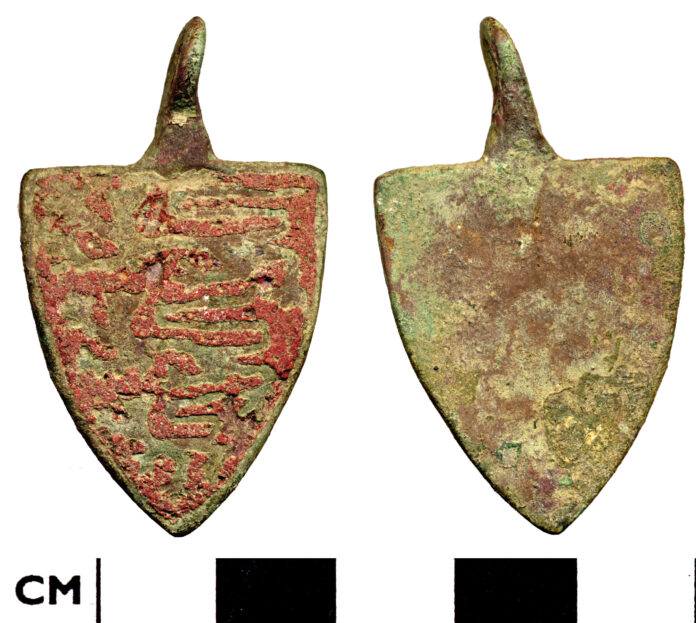In a remarkable archaeological find, a priceless 800-year-old pendant depicting three golden lions has been unearthed in Warwickshire, England. This discovery, made during the HS2 high-speed rail project, provides a fascinating glimpse into the medieval past and highlights the enduring legacy of England’s iconic symbols. Announced just ahead of the England Women’s football team’s Euro final, this treasure is steeped in history and cultural significance.
The Discovery of a Priceless Treasure

Archaeologists working on the HS2 project discovered the pendant in the village of Wormleighton, Warwickshire, located about 50 miles southeast of Birmingham. Dating back to the 12th century, the pendant is believed to have once adorned a horse harness. Its shield-shaped design, known as a “heater” shield, features three golden lions on a field of red, mirroring the England football crest that is so well-known today. The discovery is not only a significant archaeological find but also a symbol that resonates deeply with England’s national identity.
The Historical Significance of the Three Lions
The use of lions as a symbol of England has a storied history, tracing back to William the Conqueror, the first Norman king, who reigned from 1066 until 1087. William introduced two lions on a red background as his coat of arms, a symbol he brought to the English throne. Henry II, who ruled England from 1154 to 1189, added a third lion to the emblem following his marriage to Eleanor of Aquitaine in 1152. The three lions became a defining symbol of the English monarchy, particularly during the reign of Henry’s son, Richard I (1189-1199), and continued to represent the Arms of England until the establishment of the Lancastrian Dynasty in 1399.
The Remarkable Condition of the Pendant

The pendant, made of copper alloy, likely brass, was gilded with a thin layer of gold and features three lions etched onto a red background, possibly symbolizing the blood of a battlefield. Despite the passage of centuries, the pendant remains in a “remarkable” state of preservation, with some weathering of the red enamel and gilding evident, likely from its use on a horse harness. Measuring less than 2cm in width and over 4cm in height, the pendant’s small size belies its historical significance.
Archaeology and the HS2 Project
The HS2 project, while controversial for its impact on historic sites and natural landscapes, has provided unprecedented opportunities for archaeological discoveries across Britain. The site where the pendant was found is believed to have been an Iron Age or Romano-British settlement, adding another layer of historical intrigue to the find. The HS2 archaeology program has previously uncovered multiple significant artifacts, including a skeleton with a spear embedded in its back at an Anglo-Saxon burial ground near Wendover, Buckinghamshire.
A Symbol of Inspiration for the Lionesses

The discovery of the pendant was announced just days before the England Women’s football team, known as the Lionesses, competed in the Euro final against Germany. The timing of the find has been seen as a fortuitous omen, with the pendant’s iconic three lions symbol serving as a source of inspiration for the team. A spokeswoman for HS2 Ltd expressed hope that this remarkable piece of history would inspire the Lionesses to create their own legacy on the football field.
Conclusion
The unearthing of the 800-year-old pendant in Warwickshire is more than just an archaeological triumph; it is a connection to England’s rich history and cultural heritage. As the HS2 project continues to unearth secrets from Britain’s past, discoveries like this pendant remind us of the deep roots that national symbols like the three lions have in the story of England. As the Lionesses took to the field, this ancient treasure stood as a symbol of inspiration, bridging the past with the present in a powerful testament to the enduring spirit of England.
